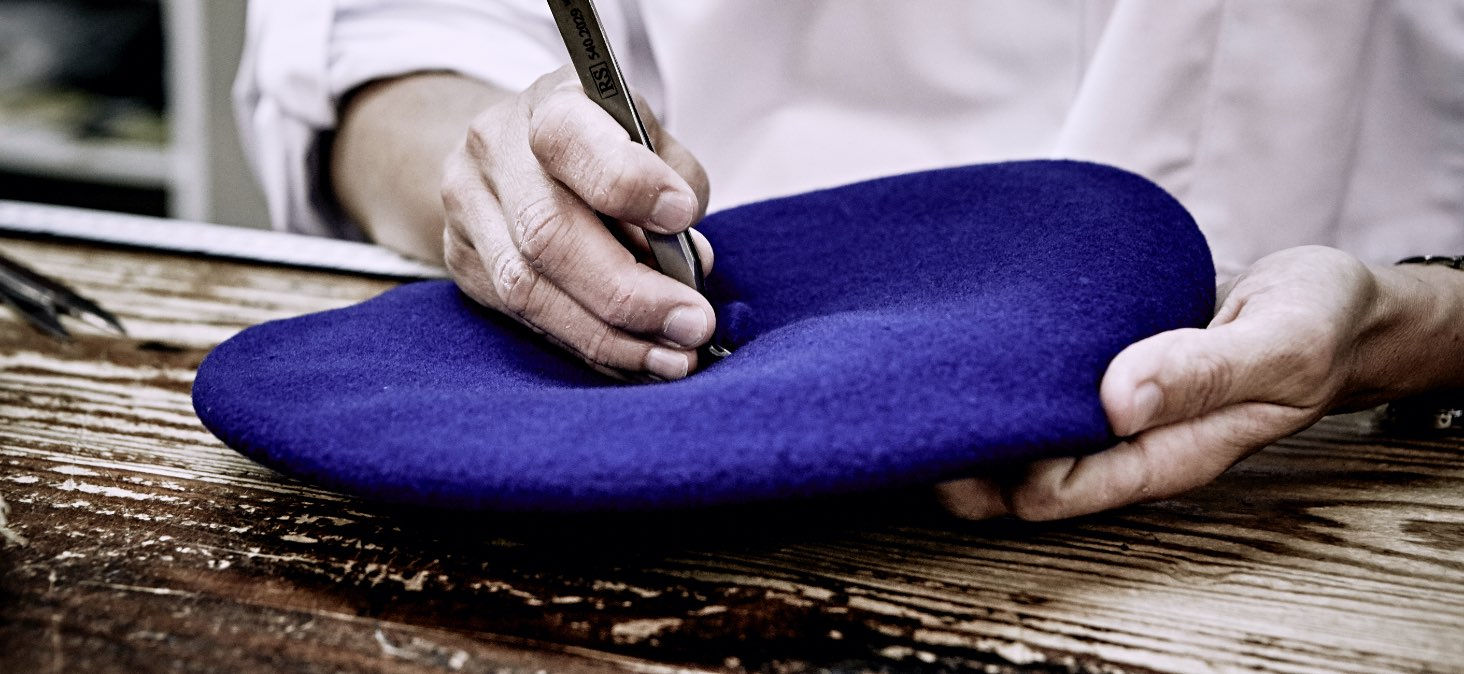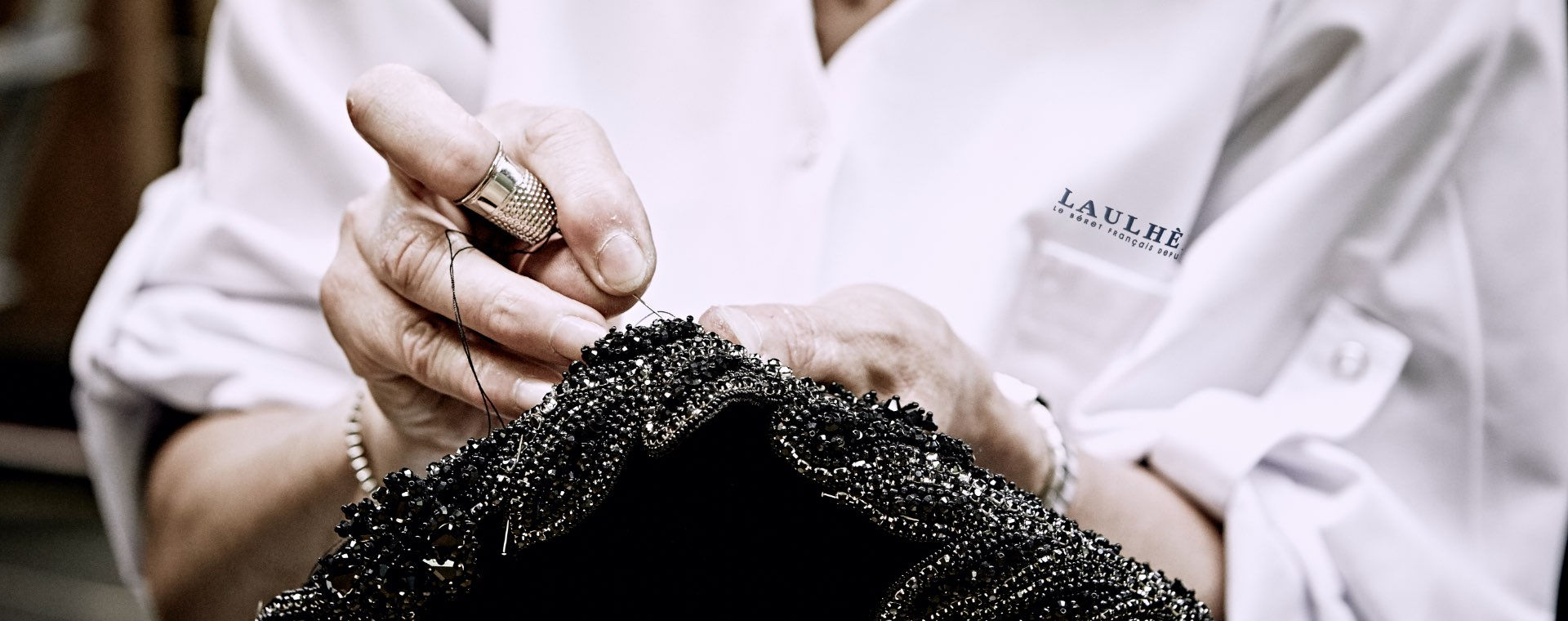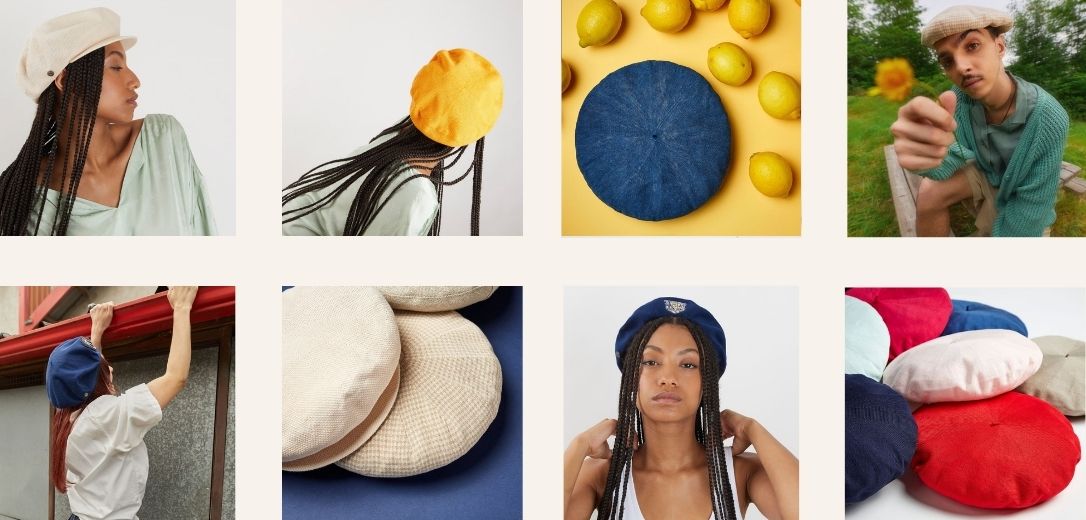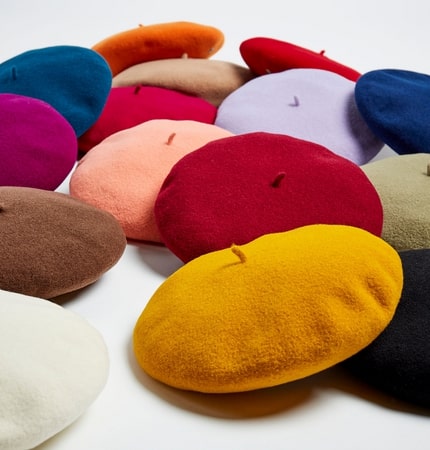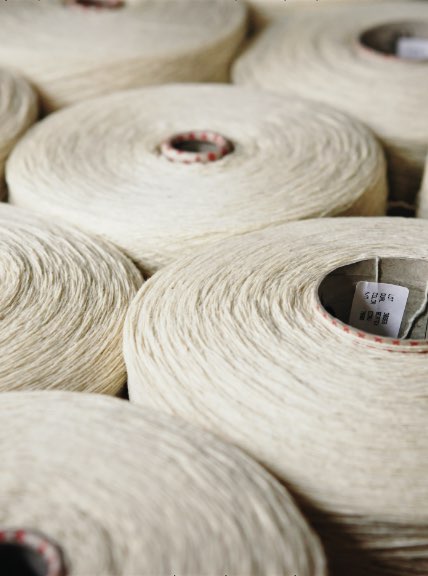
1 – Knitting and remeshing
It all starts with a carded wool yarn, obtained after untangling the raw wool from the finest fleece of Merino sheep. This yarn, which is naturally ecru in colour, has exceptional qualities and is first knitted.
This is a complex operation linked to the shape of the beret, which requires managing the number of stitches with increases and decreases. Knitting is now mechanised, thanks to knitting machines designed in-house at Laulhère in order to reproduce the ancestral gestures as closely as possible.
Then comes the remeshing, which consists of closing the knitted fabric by catching the stitches of the two edges in order to obtain a circular shape.
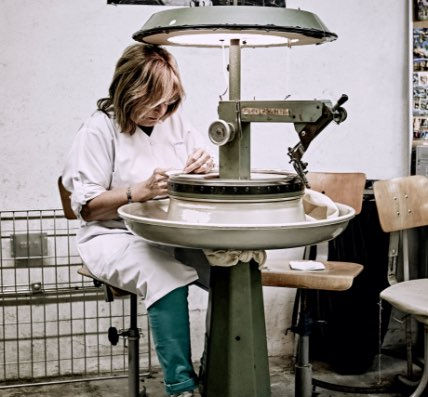
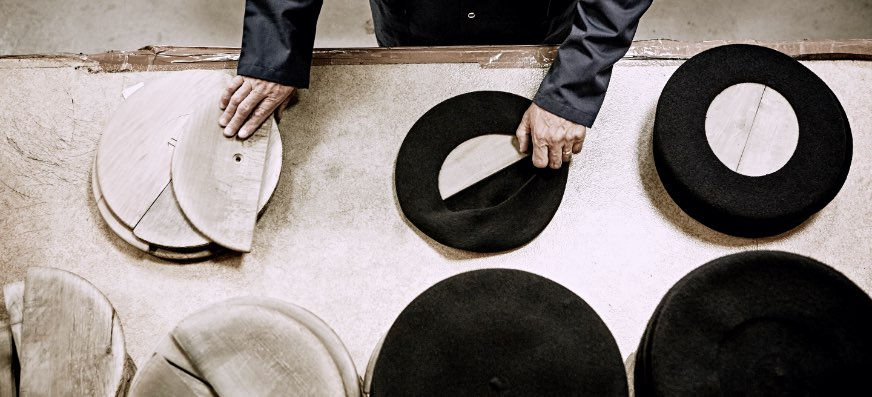
2 - Darning and felting
During felting, the beret is subjected to a mechanical action in warm soapy water. This treading allows the fibres to be felted, which gives the beret its softness and tightens its stitches. Thanks to the unique properties of merino wool, whose fibre is covered with microscopic scales, the beret will gain in density what it will lose in diameter and take on the appearance of a thick, dense, waterproof and breathable fabric. The fuller's art consists in balancing the parameters to obtain the desired flexibility and resistance.
Beyond the composition of the dyes, the result is the outcome of a mastery of different variables to be adjusted according to the quality of the yarn, the quality of the water, the temperature and the duration of the bath. A science based on decades of experience.
Always concerned about the environmental impact of our products, we use dyes made from natural pigments such as beetroot, avocado, madder and onion.
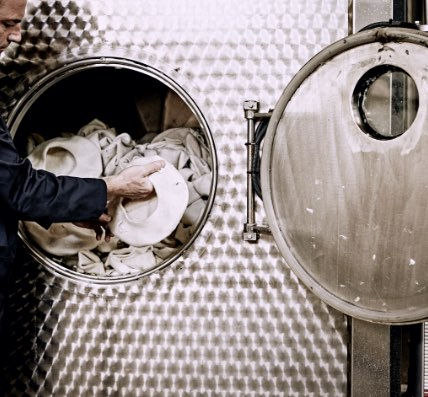
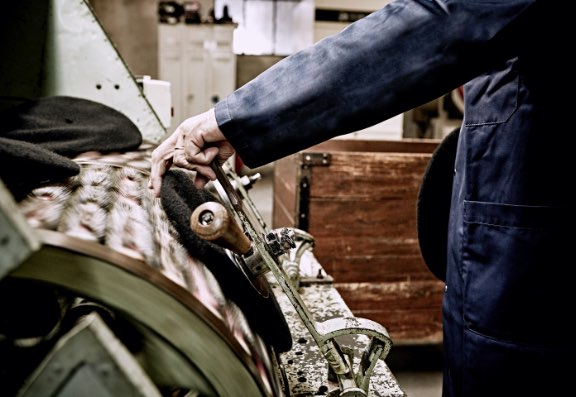
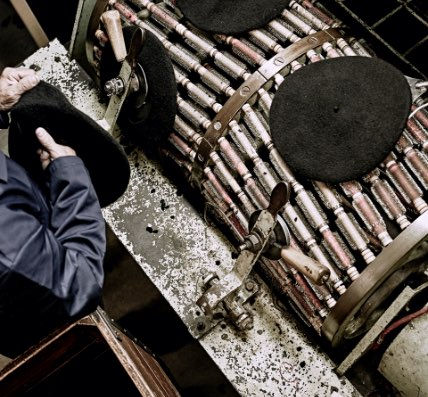
3 – Shaping and ennobling
After the dye bath, the beret is placed on a wooden form, which will give it its final diameter after drying.
The headdress is then shaped, scraped and shaved to obtain a perfect velvet finish before moving on to the manufacturing workshop. At each of these stages, a visual inspection is carried out to eliminate any items that do not comply with Laulhère's high quality standards.
The making of a beret requires two whole days of work, sometimes more, and a multitude of checks and adjustments that make each item unique.
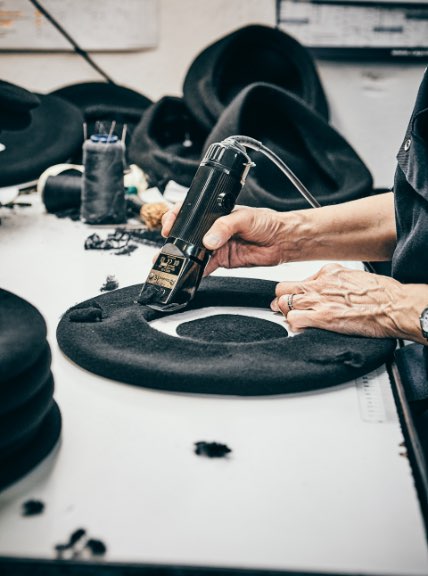
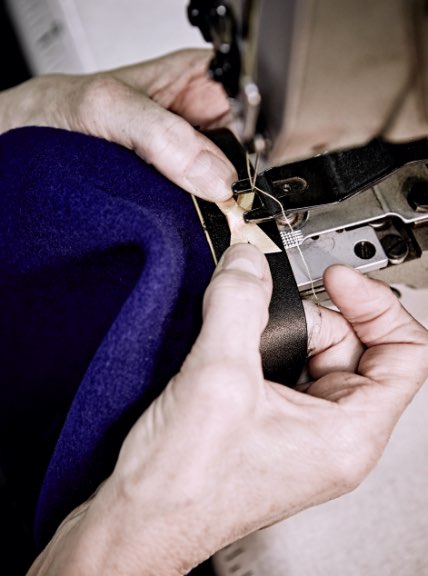
4 – Finishing
The berets are then finished with the various trimming elements: the headdress that doubles up the inside of the beret, usually made of satin, the leather stays that determine the size of the head, the coloured ribbon knot traditionally called the "bouffette", the embroidered badge that is sewn onto the headdress to give the beret its final identity, the enamelled rivet... and all the embellishments that add to the beret the unique details that you love.
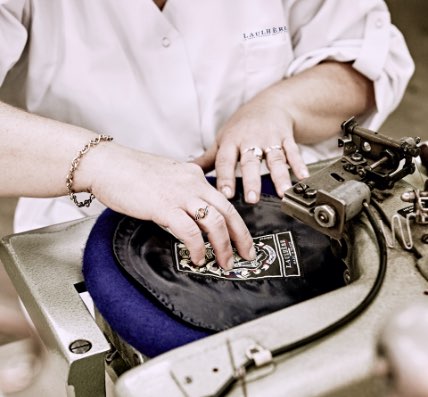
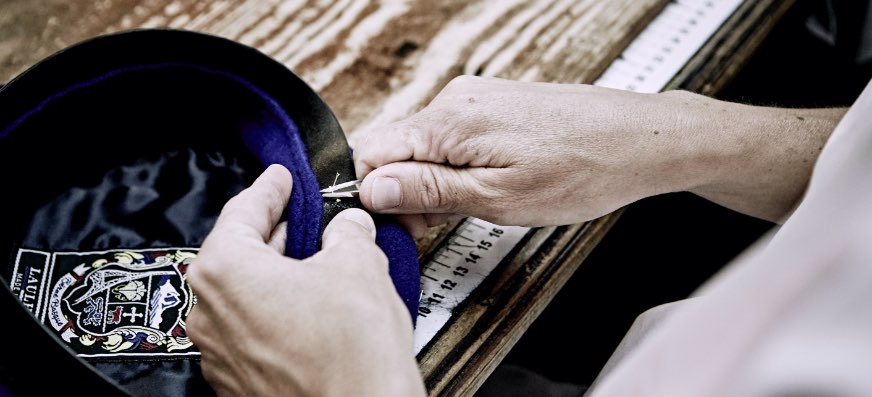
5 – BICHONNAGE
The last step before declaring the beret ready for service: the "bichonnage", as its name suggests, consists of giving it the final care and verifications so that it is impeccable to the eye and touch. Although each beret is inspected at every stage of production, sometimes a small particle remains in the wool fibres, which is removed with tweezers before a final brush of vegetable fibres is applied.
